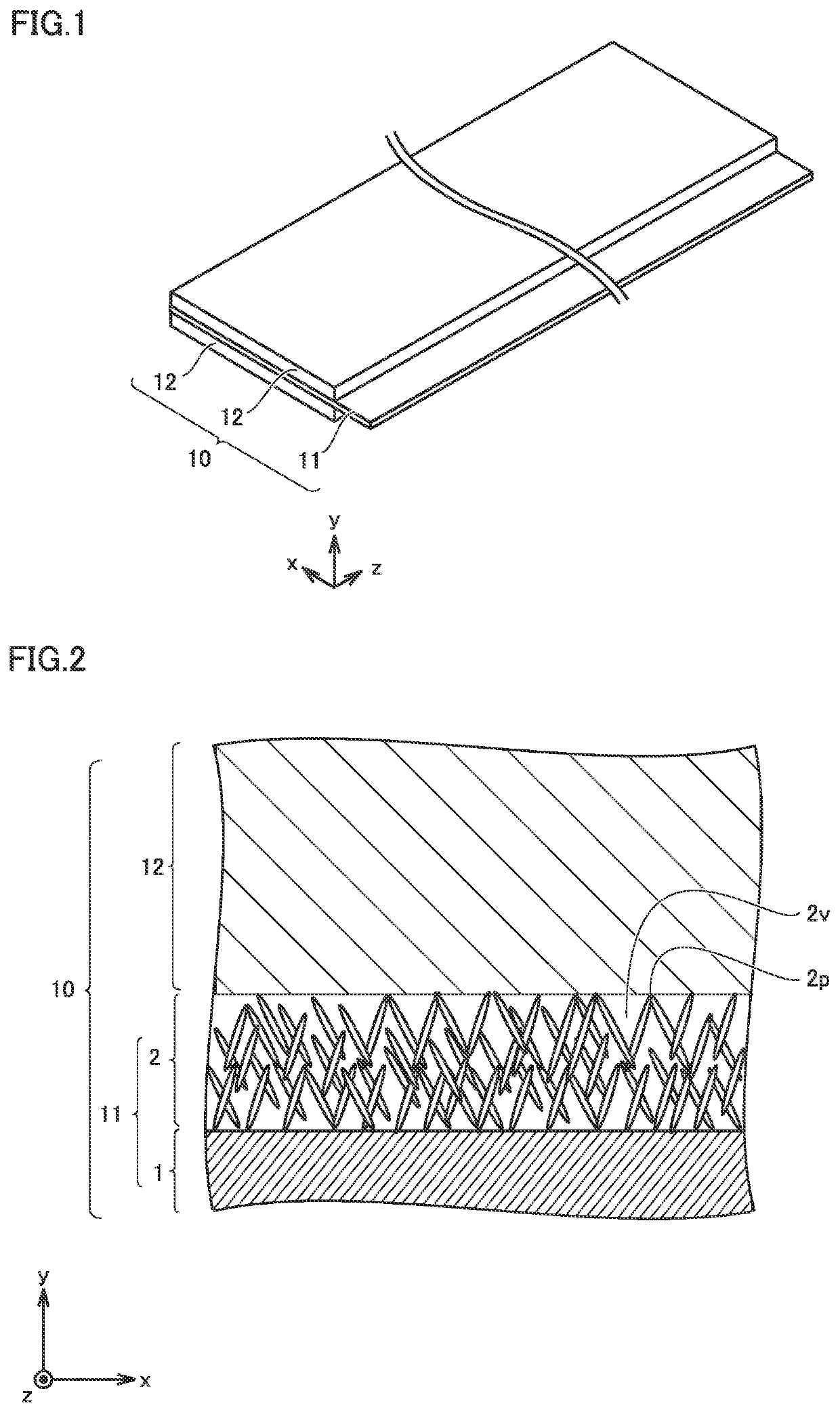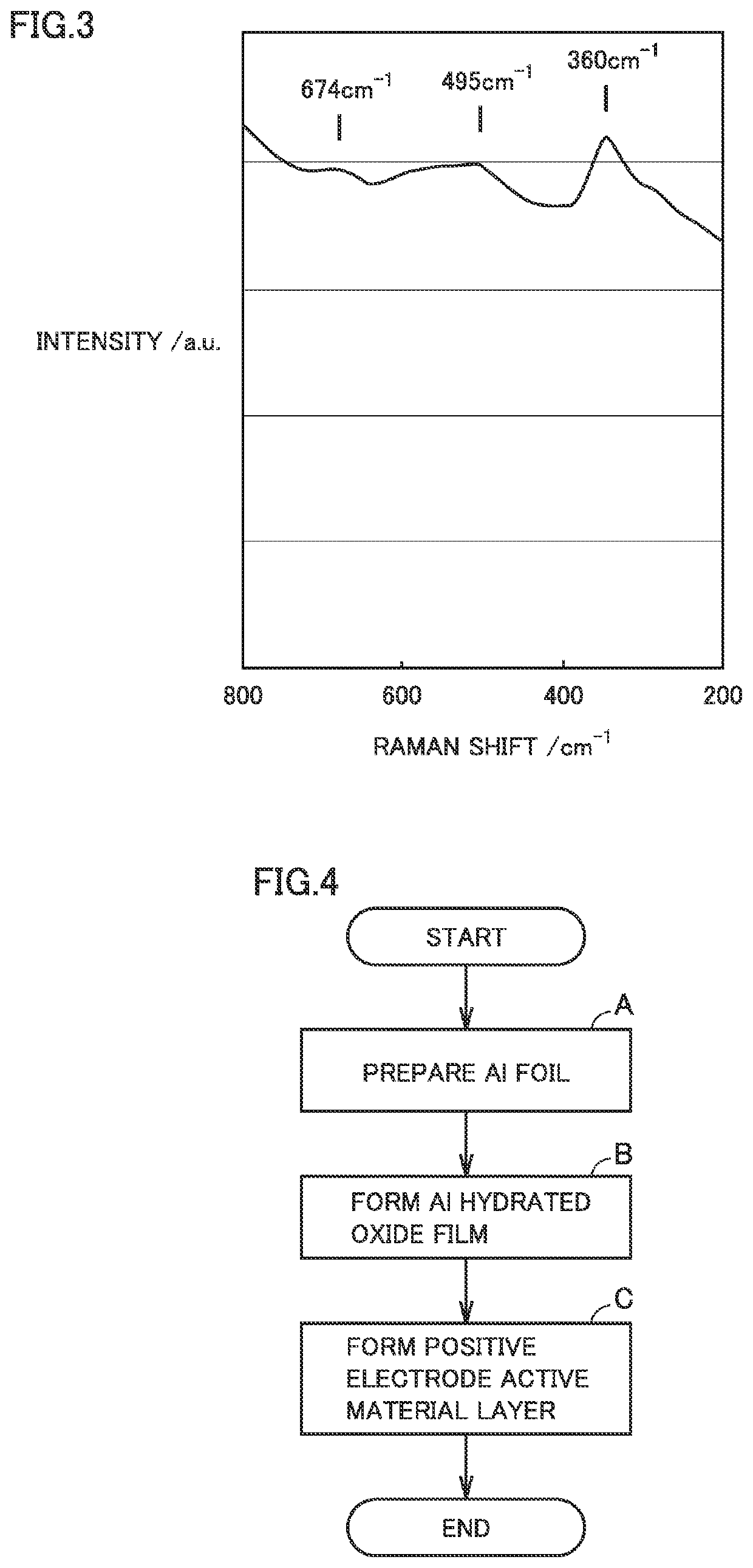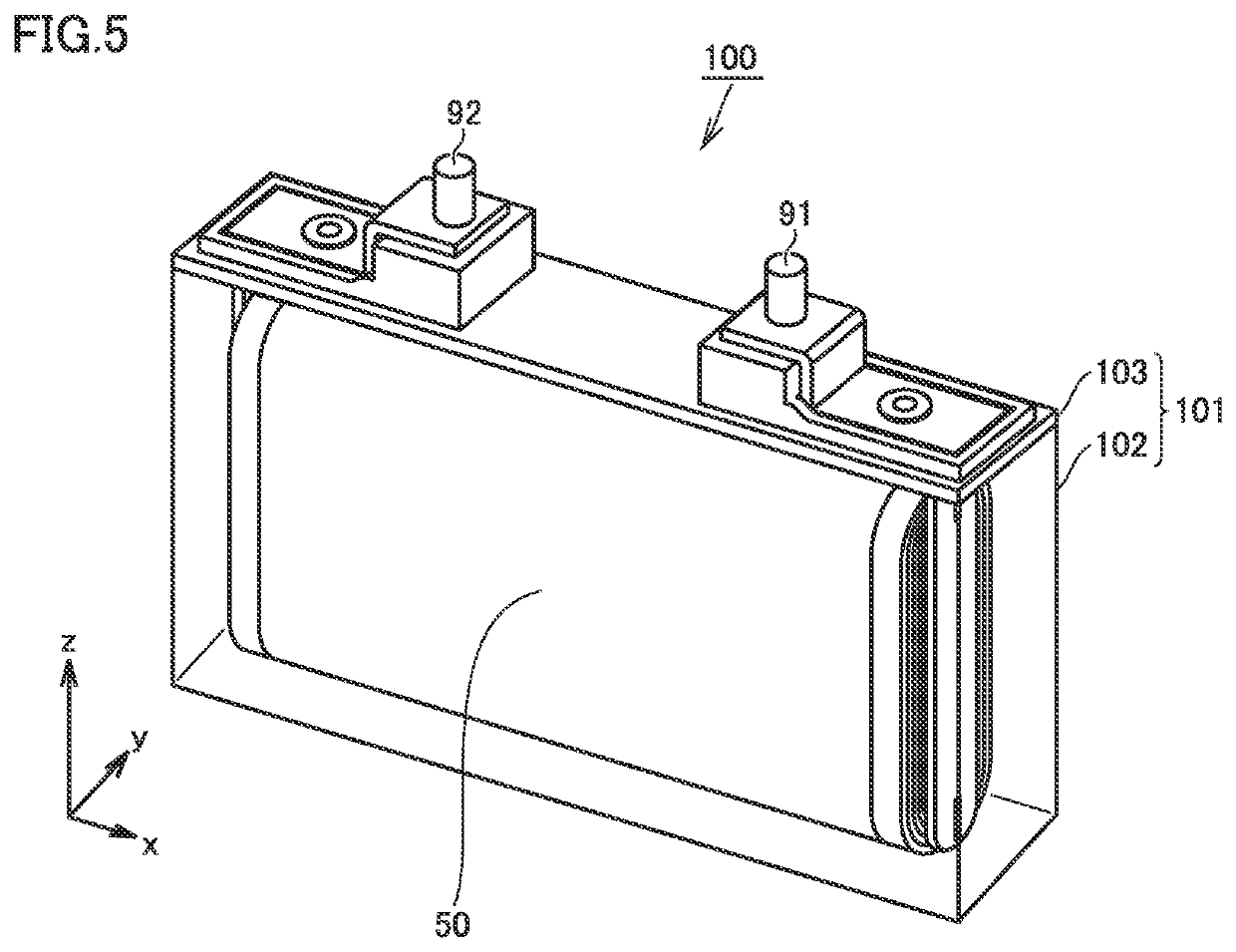Positive electrode, non-aqueous electrolyte secondary battery, and method of producing positive electrode
a non-aqueous electrolyte and secondary battery technology, applied in the direction of electrode manufacturing process, cell components, electrochemical generators, etc., can solve the problems of large short-circuit current, short-circuit current between the positive electrode and the negative electrode, al foil exposure, etc., to reduce and increase the flexibility of the al hydrated oxide film
- Summary
- Abstract
- Description
- Claims
- Application Information
AI Technical Summary
Benefits of technology
Problems solved by technology
Method used
Image
Examples
example 1
[0142]1. Producing Positive Electrode
[0143]1-1. (A) Preparing Al Foil
[0144]Al foil 1 having a belt shape (Alloy No. 1085, with a thickness of 15 μm) was prepared. Al foil 1 had a width dimension (the dimension in the x-axis direction in FIG. 1) of 130 mm.
[0145]1-2. (B) Forming Al Hydrated Oxide Film
[0146]A water bath for hydrothermal treatment was prepared. The temperature of the water bath was adjusted to 70° C. Al foil 1 was immersed in the water bath for 300 seconds. In other words, the treatment temperature was 70° C. and the treatment duration was 300 seconds. Thus, Al hydrated oxide film 2 was formed on a surface of Al foil 1. In this way, positive electrode current collector 11 was produced.
[0147]1-3. (C) Forming Positive Electrode Active Material Layer
[0148]The materials described below were prepared.
[0149]Positive electrode active material: lamellar-rock-salt-type lithium nickel cobalt manganese oxide
[0150]Conductive material: acetylene black (powder)
[0151]Binder: PVdF
[0152...
examples 2 to 9
, Comparative Examples 2 to 5
[0181]Positive electrode 10 and battery 100 were produced in the same manner as in Example 1 except that the treatment temperature and the treatment duration in hydrothermal treatment were changed as specified in Table 1 below.
[0182]
[0183]>
[0184]A Raman spectrum of Al hydrated oxide film 2 of each example was obtained in the manner described above. Then, the boehmite ratio was calculated. Results are shown in Table 1 below.
[0185]FIG. 8 illustrates Raman spectra of Example 1, Comparative Example 1, and Comparative Example 3.
[0186]In Comparative Example 1, Al hydrated oxide film 2 was not formed. The Raman spectrum of Comparative Example 1 has no peak at or near 360 cm−1.
[0187]In Comparative Example 3, hydrothermal treatment was carried out in a water bath at 90° C. The Raman spectrum of Comparative Example 3 has a high peak at or near 360 cm−1. It is considered that Al hydrated oxide film 2 of Comparative Example 3 had a high boehmite ratio.
[0188]In Examp...
examples 1 to 5
, Comparative Examples 1 to 3
[0194]Examples 1 to 5 and Comparative Examples 2 and 3 had different boehmite ratios. Examples 1 to 5 and Comparative Examples 2 and 3 had the same thickness. In Comparative Example 1, Al hydrated oxide film 2 was not formed.
[0195]FIG. 9 is a graph illustrating the relation of both a battery resistance and a one-second-later temperature to a boehmite ratio. FIG. 9 illustrates results from Examples 1 to 5 and Comparative Examples 1 to 3. The battery resistance was substantially the same despite the differences in the boehmite ratio. Therefore, the boehmite ratio may not practically have affected the electrical resistance of Al hydrated oxide film 2. In the examples of the present disclosure, the conductive material may have permeated into Al hydrated oxide film 2 and formed an electronic conduction path between positive electrode active material layer 12 and Al foil 1. As long as the thickness of Al hydrated oxide film 2 was the same, the extent of permea...
PUM
| Property | Measurement | Unit |
|---|---|---|
| thickness | aaaaa | aaaaa |
| thickness | aaaaa | aaaaa |
| thickness | aaaaa | aaaaa |
Abstract
Description
Claims
Application Information
 Login to View More
Login to View More - R&D
- Intellectual Property
- Life Sciences
- Materials
- Tech Scout
- Unparalleled Data Quality
- Higher Quality Content
- 60% Fewer Hallucinations
Browse by: Latest US Patents, China's latest patents, Technical Efficacy Thesaurus, Application Domain, Technology Topic, Popular Technical Reports.
© 2025 PatSnap. All rights reserved.Legal|Privacy policy|Modern Slavery Act Transparency Statement|Sitemap|About US| Contact US: help@patsnap.com



